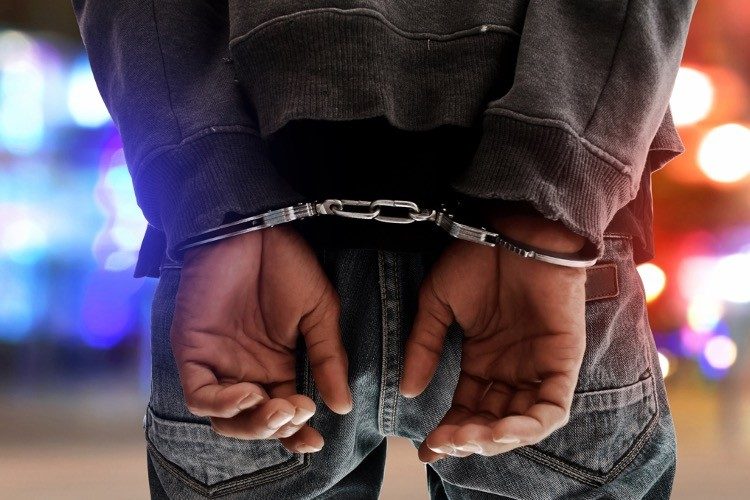
It’s that old chasm between the pseudo-elite and the street. More than three-quarters of Americans believe that crime has gotten worse in recent times, according to a November 2023 Gallup poll. In contrast, mainstream media and other pseudo-elites tell us that crime is down, citing FBI statistics to make their case. But here’s what they don’t tell you (often out of ignorance):
We can’t really know if crime up, down, or the same — not based on FBI data, anyway.
Why? Because FBI statistics appear highly suspect, to say the least.
Moreover, much as with how the CDC redefined the definitions of “vaccines” and “vaccination” in 2021, certain police departments redefined the classifications for certain violent crimes — especially after 2020, in the George Floyd riots’ wake.
Nonetheless, mainstream media love touting the “official” statistics. For example, “The 2024 FBI quarterly crime report makes clear that crime is down massively across the country — murder is down over 26 percent, rape down over 25 percent, robbery by almost 18 percent, assault by over 12 percent, and property crime down just over 15 percent,” writes Newsweek in a very biased article.
(As to the bias, the piece’s author, one Ross Rosenfeld, claims Biden’s health is “perfectly fine.”)
But the truth may be quite different. Just consider the findings of the Coalition for Law Order & Safety (CLOS), an independent group of law-enforcement officials and analysts. In an April 2024 report, they identify four potential causes for what they judge to be an “increase in crime in most major cities across the U.S.: de-policing, de-carceration, de-prosecution and politicization of the criminal justice system,” related Fox News April 8.
Even insofar as crime might in certain respects be down from 2020 levels, say the analysts, this is deceptive because that year saw a historic spike in criminality. Yet should we really believe that crime has dropped at all given government stats’ unreliability? As Fox explains:
Through aggregated data sets directly from more than 70 of the nation’s largest police departments and victim surveys, researchers claim violent crime has been “substantially elevated in major cities” compared to pre-2020 levels. The group’s research also showed that due to significant under-reporting of certain crimes, the FBI’s official data doesn’t completely capture the full snapshot of crime in the U.S.
“There’s a series of caveats attached to the FBI data that the FBI doesn’t make as clear as they should,” Sean Kennedy, one of the lead [CLOS] researchers, told Fox News Digital in an interview.
Kennedy said that, particularly in the aftermath of the 2020 George Floyd riots, several police departments redefined the classifications for certain violent crimes and transitioned away from a decades-old recording system.
“If you classify something as an aggravated assault, it’s a violent crime or a felony, but if you classify it as a simple assault, it’s then a misdemeanor and a non-violent crime,” Kennedy said. “That is a world of difference when it comes to how the media is going to portray whether or not your department is fighting violent crime.”
However, the police are not the only ones appearing to under-report. Businesses and individuals who are victims of violent crimes have also shown a pattern of reluctance when it comes to calling the police. The Loss Prevention Research Council’s survey of retailers sheds light on the reasons behind the lack of reporting. The study shows that typically, business owners tend to harbor the belief that police will not respond promptly or investigate crimes, and prosecutors will not pursue charges against the perpetrators.
The result? As the Washington Examiner reported in April in “Bad data from the FBI mislead about crime,” a “rising share of victims are failing to report their victimizations at all. In 2022, only 42% of violent crime victims and 33% of property crime victims bothered to report the crime to police.”
I can vouch for this personally. I lived in the Bronx till age 28, and off the top of my head can think of three somewhat-valuable items that were stolen from my family but which we never reported to police. We knew it would be futile.
What’s more, there apparently are discrepancies between FBI reporting and some cities’ own statistics. As the Examiner also informs, the
figures the agencies do report to the FBI do not match the agencies’ publicly reported figures. For Baltimore, the FBI reported 225 murders in 2023, but the city reported 262 — which means the FBI left out 37 murders. In Milwaukee, the police department reported a 7% increase in robberies, but the FBI showed a 13% drop. Nashville’s own data tallied more than 6,900 aggravated assaults in 2023, but the FBI counted only 5,941, leaving almost 1,000 of those offenses “missing.” This trend is consistent across the board: While 2022’s FBI city-level figures track the police’s own data, the 2023 numbers consistently undercount offense totals. Any year-to-year comparison overstates decline.
Other measures of crime levels undermine, or at least muddle, the veracity of the FBI’s data, which rely on “reported” offenses by victims and law enforcement themselves. The federal government’s own victims’ survey, which attempts to capture the gap between the number of actual offenses and the number reported to police, shows much higher offense rates than the FBI does.
Moreover, it was also the case that because many localities had not transitioned to a new crime reporting system the FBI had made mandatory in 2021, many municipal police departments did not submit crime data to the agency for one or two recent years; these omissions sometimes included high-crime metropolises such as Chicago, Los Angeles, and New York City. Supposedly, however, this problem has been largely remedied.
Whatever the case, if crime has dropped — a big “if” — it would simply align with long-term patterns. It has declined in general, after all, since the 1990s, through Democratic and Republican administrations. Yet note here that much of this hinges on age-related demographic shifts and local policy, as crime is primarily a state and local issue.
In the final analysis, however, statistics fall on deaf ears when people witness left-wing prosecutors coddling criminals, shoplifting justified, de-policing, de-carceration, and politicized “justice.” After all, no amount of spin changes the fact that bad policy is just that — bad policy.



